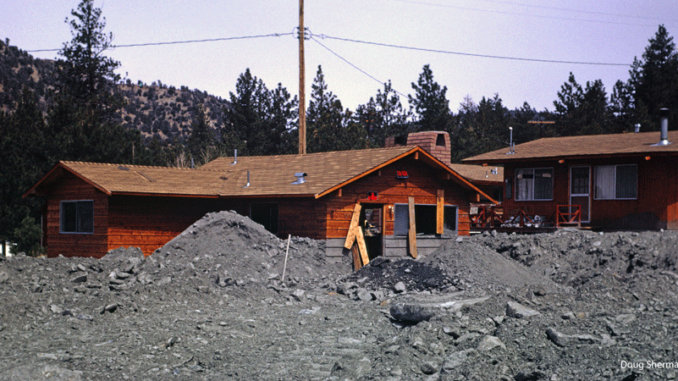
Deadly Mudslides in California
Over the past several months, whenever we heard about California weather in the news, it was usually because of the devastating wildfires that ravaged huge portions of the state and left a wide path of death and destruction in their wake. Now, Montecito, a city in Southern California, is facing a very different, though even more deadly, crisis: mudslides.
Last week, heavy rainfalls caused hillsides to collapse, wiping away properties and claiming over seventeen lives. At least thirteen other people are still missing. Thousands more have been left without water or electricity. Many evacuees are staying in churches because they have nowhere else to go.
What is especially ironic about these mudslides is that they are taking place in the same area where the Thomas Fire–the largest wildfire in California’s history–burned last month. That time, roughly 9,000 residents of the area were evacuated. Firefighters were able to save most of the houses in Montecito, only to have hundreds of them destroyed by mudslides just a few weeks later. (It is estimated that 100 homes in Montecito were completely destroyed by the mudslides, 300 more were damaged, and roughly 1,500 are still in danger.)
Actually, it’s not a coincidence that the wildfire and the mudslides occurred in the same place. When the hills above Montecito burned, so did the brush and trees. Without the brush and trees to anchor the earth, heavy downpours caused the hillsides to collapse. Residents were told to evacuate when the rains were predicted, but many chose not to, with grim consequences.
Dig Deeper Using Internet resources, locate a map that shows the boundaries of last month’s Thomas Fire. Based on what you’ve read in this article and what you see on your map, can you predict if any other areas might be in danger of mudslides in the future?
To Slap or Not to Slap?
Is smacking or slapping children child abuse? That’s exactly what the government of Wales is trying to figure out.
Wales is considering becoming one of the more than fifty countries that have already established an official ban on slapping one’s children. Right now, they are conducting a twelve-week survey process to see what the public thinks about it.
Supporters of the proposed ban say that smacking children is an outdated and ineffective method of discipline. Studies have shown that it can harm children, both physically and emotionally, and has serious long-term consequences. It can also cause aggressive and antisocial behavior in children. And because every parent has his or her own idea about what constitutes reasonable discipline, some are more willing to use damaging physical aggression than others.
However, a group called Be Reasonable has already formed in opposition to the ban. According to this group, parents–and not the government–should be the ones responsible for deciding what “reasonable discipline” means for their children. They say that a light smack or slap as discipline doesn’t hurt children, and can be effective in helping them behave. The group also argues that the new ban will waste time and resources on prosecuting good parents, instead of punishing the truly abusive ones. So far, the group has gathered more than 1,500 signatures on a petition against the ban.
What Do You Think? Should governments pass laws preventing parents from using all forms of physical discipline against their children? Why or why not?
Don’t Skip Face Day
Finally . . . exercises you can do while sitting on your couch!
A new study has shown that exercising the muscles of your face can actually reduce signs of aging by up to three years. While these “non-surgical facelifts” have been gaining popularity in recent years, it was thought that they didn’t have any scientific evidence to back up their effectiveness. So a group of scientists at Northwestern University decided to conduct a study to investigate.

First, they found 27 women between the ages of 40 and 65 to participate. The women were photographed, then taught 32 facial exercises, which they completed in a 30-minute session. They were asked to repeat the routine once a day for eight weeks. After eight weeks, they were photographed again. Finally, they were asked to repeat the routine once every other day for another twelve weeks. After the additional twelve weeks were up, the women were photographed a final time. A group of dermatologists (skin doctors) then studied the photographs and agreed that the women looked younger in the final photographs.
So why does it work? As we get older, the fat pads underneath the skin of our faces begin to thin and loosen. Gravity draws them downward. The result is that our cheeks get more hollow and our faces start to droop and sag. But when people “exercise” their faces, the muscles get stronger and larger, filling out spaces that would otherwise be hollowed-out, drooping, or wrinkled.
What Do You Think? Go online and find some examples of facial muscle exercises, then give them a try. Based on this article and what you’ve learned online, do you think that “facial aerobics” is an effective way to fight the signs of aging? Explain.
Milennial Millionaire
Shane Missler of Port Richey, Florida, just made history.
How? At only 20 years old, he just won the fourth-largest jackpot in Mega Millions lottery history. The amount? $451 million.
Actually, Shane decided to take the lump sum payout of $281.2 million. In case that doesn’t sound like much, it’s roughly the same as the net worth of Taylor Swift.
Shane purchased the ticket at a 7-Eleven convenience store in Port Richey, a suburb about forty miles northwest of Tampa. The store where he bought it will receive a $100,000 bonus commission for selling the winning ticket. When he found out he’d won, the first person he called was his brother. Then, the next morning, he met his father for a cup of coffee to tell him the good news.
Before winning the lottery, Shane was employed as a background screening worker, but he has now “retired.” He plans to buy a new home in Tampa, provide for his family, pursue his passions, and secure his financial future. Best of all, he has said that he would like to use the money to help others and to do some good for humanity.
If you suddenly have the urge to play the lottery, you should know that the odds of winning a Mega Millions jackpot are about 1 in 302 million. (But just in case, Shane’s winning numbers were 28, 30, 39, 59, 70, and 10.)
